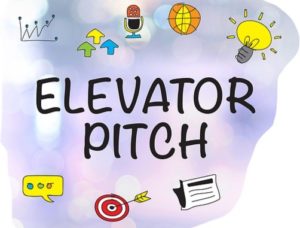Use Elevator Pitches to Explore Critical Issues
Our students benefit from opportunities to explore critical questions about topics relevant to their lives. In previous years, one way I achieved this goal was by organizing debates.
However, in the hybrid model, a typical debate would be challenging to manage for both the teacher and the students. And the actual real time communication needed in a debate would would difficult to achieve.
Also, in this hybrid model there have not been the same opportunities for students to build the relationships with each other and reach the level of comfort and trust needed to engage in debates about critical social and political issues.
This year, I decided to assign elevator pitches – quick presentations a few minutes in length – to give my students an opportunity to explore critical questions in a new way. This assignment asked them to investigate credible sources, develop their own ideas based on facts, organize their ideas in writing, and share their ideas with others in a safe space.
Topic Choices
Students began the assignment by choosing from a list of questions to research. The questions below are the ones I used in October, but they could be adapted based on current events and issues. My classes were highly engaged throughout this assignment and really valued the opportunity to spend time learning about things that impact their lives and communities.
- Should the United States government be able to mandate its citizens to wear masks during pandemics?
- Should the police be defunded (and what does that mean)?
- Should the United States be part of the Paris Climate Agreement?
- Should citizens who have been convicted of a felony have the right to vote?
- Should the United States government be able to mandate its citizens get vaccines?
- Should healthcare be considered a human right?
Research
Once students decided on a question to research, they began the research process. They were required to use a minimum of three current and credible sources. They used the media bias chart (AllSides.com) to guide their research by exploring sources from the center section of the chart.

Students also used our school media center’s EBSCO page and other internet portals to find resources and tips on the slant and reliability of various media outlets. They evaluated all sources for bias and credibility, and when needed reached out to me for assistance in determining the credibility of a source.
Students have instant access to “information” on the internet, but it is challenging, even for adults, to navigate through misinformation and opinions to determine the facts. Taking the time to explore various sources showcased the multitude of misleading and false information that is available online and demonstrated the importance in checking sources for credibility before assuming the information is true.
Working through this process with various sources about a single topic not only gave students practice in checking credibility and authenticity of information but it also gave them a better understanding of how the same “facts” can be interpreted and presented differently by people of different beliefs and political persuasions.
Writing Process
After researching, students organized and synthesized their notes to write a claim based on their chosen question. It was interesting to see how some students went into their research thinking they would write their claim for a particular side, but after researching they changed their mind.
After writing the claim, students then began writing an elevator pitch that supported their claim with evidence, cited sources, and restated the claim at the end with a potential call to action. Students had to choose the evidence that best supported their claim and work on being concise to keep their speech around 90 seconds.
Speaking and Listening
After completing the final draft of the speech, students practiced performing them, and then recorded the speeches on their iPads and uploaded them to our private shared space. This allowed students to practice speaking skills and share their thoughts about an important topic in a low-stakes environment.
The opportunity to have multiple retakes of their speech instead of giving it live in front of their peers helped students to focus on the message they were sharing instead of worrying about having to deliver it perfectly in front of their peers in real time.

I also previewed all speeches before sharing them with the class. This allowed me to make sure that students used credible sources in their speeches and would provide accurate information if they chose to share it with the class, whatever their point of view.
Building Respectful Habits of Mind
There are countless examples of adults who misrepresent facts or outright share false information, and who are not willing to listen to opinions that differ from their own. This assignment provided my students with positive examples from their peers of how to use facts to support a claim and how to listen to various perspectives and even strongly opposing views with an open mind.
While this assignment was designed with the challenges of hybrid learning in mind, after seeing the outcome and response from my classes, it’s a virtual activity I definitely plan to continue after we return to full in-person instruction.
Kasey Short (@shortisweet3) loves to share ideas from her classroom and writes frequently for MiddleWeb. She attended the University of North Carolina at Chapel Hill and earned a bachelor of arts in middle school education with a concentration in English and history. She went on to earn a master’s in curriculum and instruction from Winthrop University. She is currently an eighth grade ELA teacher and English Department chair at Charlotte (NC) Country Day School.





























